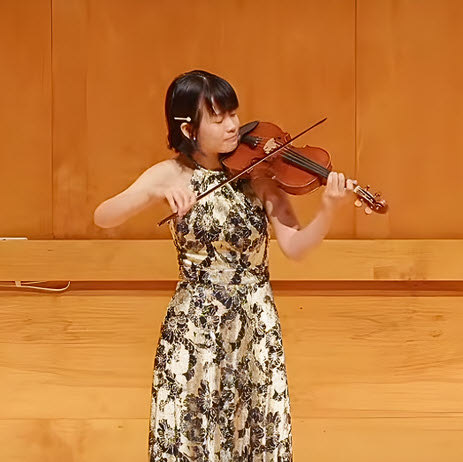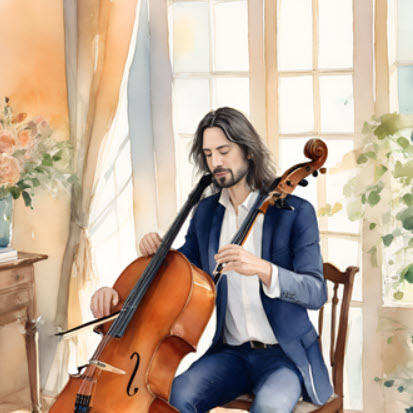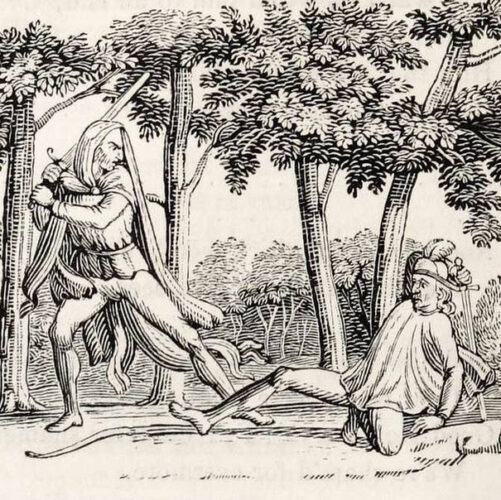by Parker Ramsay
Published April 1, 2024
The Art of Programming Early Music
‘Sure, the music is great, but who cares? How are people going to know what lies ahead for them?’
What’s in a program? Well, a lot of things. We in the early-music-industrial complex have to consider personnel, budget, and repertoire, as would any classical or new-music ensemble. In recent months, as the pandemic has seemed to wane, there’s been a lot of talking, and thinking, on what makes programming in our field peculiar, both logistically and aesthetically.
I recently took a stab at thematic programming with my ensemble, A Golden Wire, using music of Henry Purcell and his lesser-known forbears (at least to general audiences) such as Lanier, Jenkins, and Lawes. The natural question arose with my co-director, the viola da gamba player Arnie Tanimoto: Sure, the music is great, but who cares? How are people going to know what lies ahead for them?
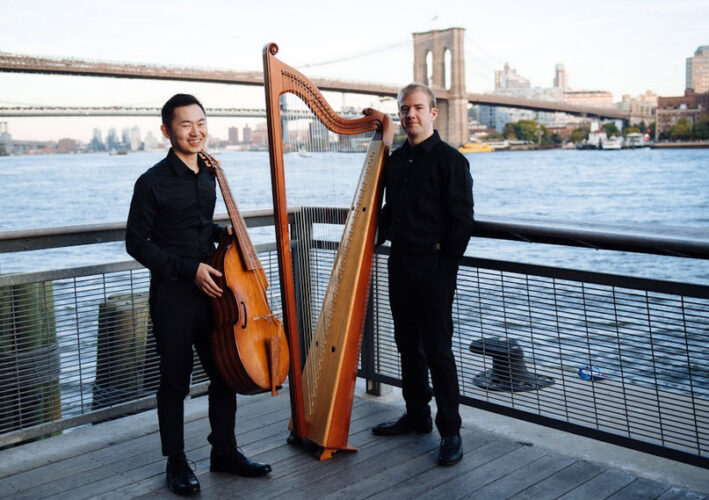
Through a gradual process of selection, a unifying thread presented itself: There’s a huge amount of music which centers on love’s effect on the mind. Be it jealousy and rage (such as “Music for a While”) or even insanity (such as Purcell’s famous “Mad Bess of Bedlam”), emotional states were oft described in terms of physical side effects. At the suggestion of a presenter, the program’s title became “Love’s Sickness,” a quote taken from one of Purcell’s airs in The Indian Queen: “I attempt from Love’s sickness to fly in vain, since I am myself my own fever and pain.”
To my surprise, the audience seemed to lock in with both the theme and the music as naturally as they might have with a more conservative or canonical program. However, I was keenly aware that programming tactics such as these were not always the norm for historical performance ensembles — even as we try to grow support for period-instrument performance.
The more I thought about what works in programming, the more curious I was to figure out the zone between planning a concert and audience engagement, and learn how presenters select HP projects.
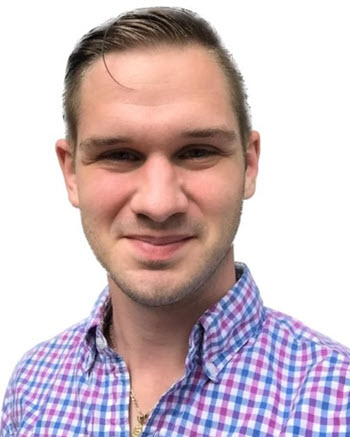
The first person I reached out to was Nicholas Russotto, an organist and the new executive director of Tisch Music at 92NY (formerly the 92nd Street Y), where he used to be director of music programming.
“Tisch music is about as eclectic a music series as you can get,” he told me. “We currently program a slate of 60-80 events across all genres — jazz, classical, contemporary, etc. Three or four of which engage with historical performance or feature period instruments.”
Asked what function or place HP serves in such an eclectic series, he assured me that he tries “to avoid thinking of historical performance as a relic of the past, [since] the ongoing musicological and pedagogical work in historical performance is driving changes in our understandings of tempi, articulation in canonical repertoire, as well as getting us to expand our concept of the canon itself.”
As such, he continued, “I see historical performance programming as a reflection of a holistic viewpoint that has a particular place in a classical music series. It’s good for a classical music audience to be reminded we weren’t always hearing Bach on metal strings or on a piano.”
‘With consistent investment, we hope we can build that audience base’
I challenged him if there was ever a mismatch of visions between what early-music ensembles do and what a classical music series might present. “Not being lodged at a university or being a specialist presenter of early music,” he offered, “we tend to shy away from programs of only new [i.e. unfamiliar] repertoire. This isn’t to say there can’t be a strong intellectual backbone, it’s just that we couldn’t sell a doctoral dissertation. We need something with larger programmatic vision for audiences to grab onto.”
He added that because the early-music audience is not dead, but ever-growing, there are a number of ways and places one can hear early music. Carnegie Hall, for example, is still the place in New York to hear projects with large period ensembles from Europe performing an unstaged Handel opera or a St. Matthew Passion.
Similarly, there are myriad presenters in the city who specialize in presenting early-music ensembles where there is opportunity to push the envelope. “The appreciators of early music are everywhere in New York, but we also realize that historically they’re not necessarily coming to the Y to do it. But with consistent investment, we hope we can build that audience base at the Y.”
‘This isn’t to say there can’t be a strong intellectual backbone, it’s just that we couldn’t sell a doctoral dissertation.’
After talking with Nick, I was interested to see how a small organization with a strong following might approach the same issues. “We in the early-music community talk a lot about how to expand the canon, but there can be a real disconnect with audiences,” said Debra Nagy, artistic director of Les Délices, an ensemble based in Cleveland. “How we balance it is a very important question.”
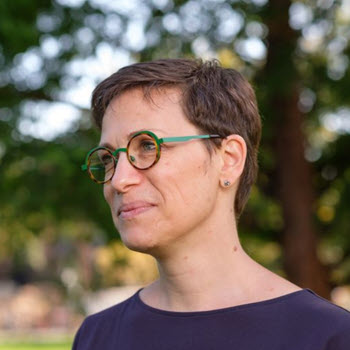
She offered that the enterprise of expanding an audience and catering to an existing base of support can be tricky. “I love to say that Les Délices presents music you wouldn’t hear anywhere else. And yet, we want and need to see our base of support grow. I think those of us in arts organizations understand that ticket sales are often the smallest component of revenue supporting a concert. But that doesn’t mean they’re unimportant. If you’re only presenting four ticketed programs a year, how can you say ticket sales are unimportant?”
When talking about how it is audiences can be brought in the door, she listed some questions that she asks herself. “What is it that I’m offering? How much explaining will I have to do? Some of the most ambitious projects aren’t necessarily without appeal, but they are difficult to explain to audiences. The Goldberg Variations explains itself. A Christmas project called “Noël, Noël!” is such a familiar topic that audiences scarcely need to know what it’s about, even if it’s full of music they’ve never heard before. But something that’s far more conceptual is harder to explain, and a harder sell no matter what it costs.”
As I inquired what a more conceptual program would look like for Les Délices, she started to discuss one called Seasons Transformed. “In it you’ll hear Vivaldi’s Four Seasons as you’ve not heard them before in arrangements and transcriptions, but also a pastiche concerto for summer by Jean-Phillippe Rameau, showing how French composers and audiences translated the Seasons for their own musicians and audiences.”
There’s a lot of interesting and bizarre material to choose from, she explained, which isn’t necessarily even in the program. “For instance, there’s a Michel Corrette grand motet based on Vivaldi’s Spring, which I’ve played in the past. It’s very whacky and fun, and when people hear it, they all go, ‘Oh my God, that’s so cool!’ There are also Nicolas Chédeville’s Les saisons amusantes, which modify and transform Vivaldi’s Seasons for the musette or hurdy-gurdy. These are the seeds of inspiration for a program: It’s all fascinating music, while still being centered on the music of Antonio Vivaldi. It’s not a bait-and-switch, but I hope it’s a program that’s legible for an audience and will seem fun.”
She went on to offer that the relationships that audiences have with ensembles and presenters can vary. “When looking at other series and organizations in the U.S., I always ponder from afar whether an audience will be drawn in by a performer, or by a relationship with the presenter, whereby they trust that the quality of what will be shown to them is very high. But it’s tough right now to gauge exactly, since audience commitment isn’t necessarily there, post-COVID. I speak generally when I say that presenters seem to me to be a little more risk-averse than they were before the pandemic. I could be wrong, but it seems there’s more to lose.”
Les Délices was born in 2009 in the aftermath of the Great Recession. “I was looking at my calendar as organizations were bouncing back slowly,” Nagy recalled of that financially unstable period, “and I realized that apart from maybe one or two projects — as well as my work with Les Délices — I was only going to be playing Bach for an entire season, a sign to me of very conservative programming choices. I think the two projects that weren’t Bach were with Tempesta di Mare, an ensemble well-known for doing a lot of different stuff. But it made me realize that the mission of Les Délices would be even more important in trying to promote music that wouldn’t be heard otherwise.”
The experience sells it
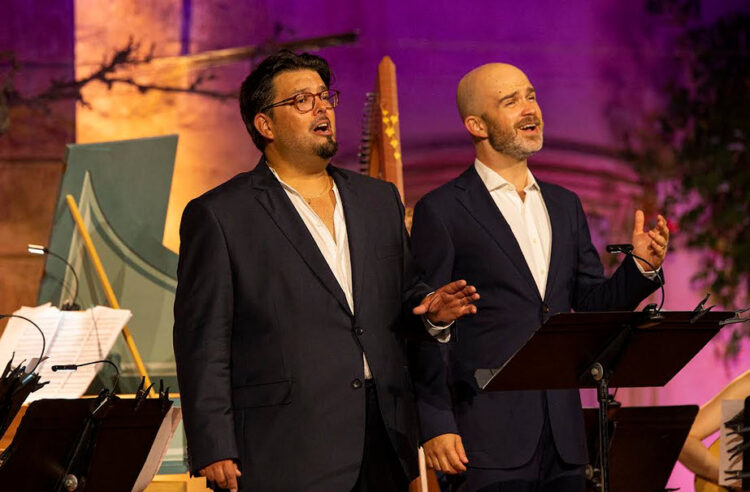
In the last few years, I’ve seen a number of fascinating projects which promote otherwise obscure music to make it both marketable and enjoyable for audiences, especially overseas. I sat down next with tenor Zach Wilder, whose project A Room of Mirrors, with Emiliano Gonzalez Toro and the ensemble I Gemelli, has garnered huge success in showcasing repertoire for two tenors from early 17th-century Italy. “We put the program together with an eye to finding really great music that would make for a really fun and listenable album. But it all radiates out of Monteverdi’s influence, as the tenor duets from L‘Orfeo are some of the first examples we have of a new form that exploded further into the 17th century. Monteverdi’s shadow is hard to avoid but it’s also an asset as a frame of reference for the audience member who might be less familiar with a composer like Sigismondo d’India or Vincezo Calistani. A lot of these composers were circling Monteverdi at the time, so, in a sense, our program of music for two tenors does center around Monteverdi despite there being no Monteverdi on the album.”
When asked how such a concept works, he replied that the “experience we’re selling is what attracts people.” He went on to talk about his experiences with other ensembles in Europe where fashioning experiential programs is essential to both the artistic and marketing process. “Getting people in the door is important, but you have to make sure the program is enjoyable and has some internal cohesion. I think the programming genius in Europe with regards to creating narrative can be seen in someone like Raphaël Pichon and his Chemins de Bach project.” (Pichon’s project presents music from members of the Bach family, and also Bach’s pedagogical forbears and colleagues throughout his career.)
For Wilder, the early-music “canon” tells us a lot about audience psychology and emotional engagement. “I think we tear our hair out when we play the St. Matthew Passion over and over again — which is a big portion of my income. But I travel to the Netherlands each year, which has the most number of Passions in the world and the concert halls are full. It’s like going to see a Handel Messiah in the U.S. where there is a ritualistic experience connected to a certain time of year, or with connecting with family. There’s a branding that is part of daily life for audiences.” But Wilder also offered that new experiences can develop their own traditions. “If you look at the music of Rossini, Bellini and the bel cantists, there wasn’t a too distant past when their works weren’t being regularly performed in opera houses, until there was a revival. The same goes now for something like Monteverdi’s Vespers: it’s exploding in numbers of performances. I see that audiences are gaining familiarity with a work more and more as the decades go by, thanks to the internet and high-budget recordings. As for new traditions, TENET in New York created their own Christmas and New Years tradition with the work.”
There is reason to be optimistic, so long we’re all savvy and sensitive to audience expectations
As young performers forge ahead in promoting projects with lesser-known material, it would appear that there is reason to be optimistic, so long we’re all savvy and sensitive to audience expectations. After all, audiences are not stupid, but they’re not musicologists, either. The survival of our art is dependent on our ability to reach out to them. Indeed, the new and unfamiliar need not be jarring or challenging for an audience but, rather, part and parcel of the same enjoyment we experience when we perform.
Parker Ramsay is a harpist and keyboardist based in Paris. He specializes in early and contemporary repertoires. He has written for the New York Times, the Washington Post and VAN Magazine. For EMA, he recently wrote about Lillian Gordis and rethinking the harpsichord.

